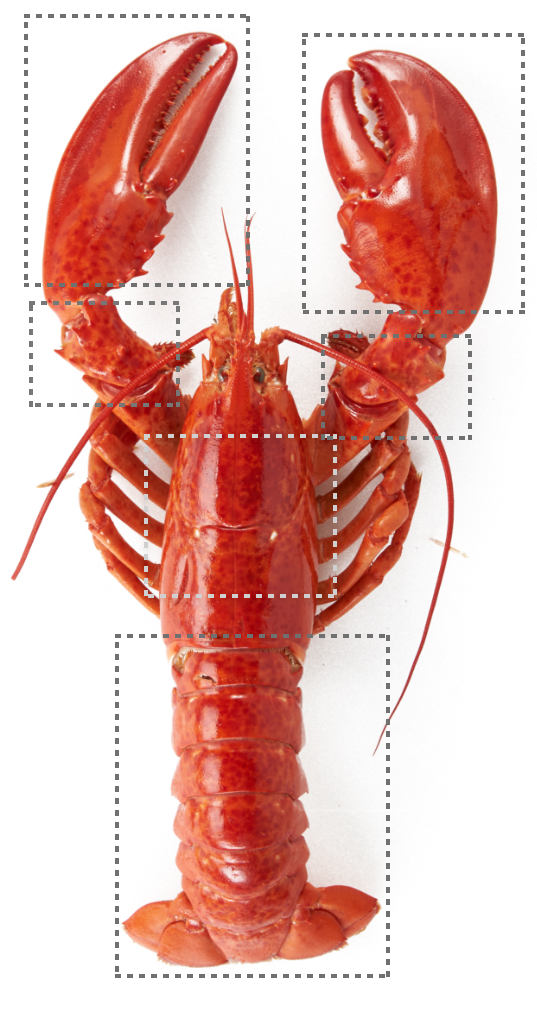This website uses cookies so that we can provide you with the best user experience possible. Cookie information is stored in your browser and performs functions such as recognising you when you return to our website and helping our team to understand which sections of the website you find most interesting and useful.
The Claws
Cold-water lobsters, such as those we sell at Seafood by Sykes, have two large, distinct claws that contain meat. Claw muscles are softer because they aren’t used as much as the tail. The crusher claw, the larger of the two, breaks shells and helps the lobster crush things. The finer-edged ripper claw is used to tear flesh.
Back to diagramThe Knuckle
The knuckles on a lobster are the two joints connecting the claws to the body. The meat inside this part of the lobster is considered the tastiest, although you’ll have to savor the small amounts of it. You can access the meat by cracking the shell lightly with a knife or hammer and peeling the shell away
Back to diagramTomalley
The soft green mass in the body of a cooked lobster is a digestive gland, sort of like a liver and a pancreas combined. It’s known to marine biologists as the hepatopancreas and to lobster fans as the tomalley. Many in the latter group prize the tomalley for its creamy texture and intense flavor; our tasters described it as akin to “lobster concentrate.” Tomalley is eaten as is, whisked into sauces, or mixed into a compound butter and spread on toast.
Back to diagramThe Tail
The tail is a popular part of the lobster for people to eat because it is the easiest to handle and is usually the meatiest part. The meat of a lobster tail is chewier than the claw meat due to the way and how often lobsters use their tails. When needing to get away in a hurry, lobsters flap their tail rapidly to scoot out of harm’s way. This makes the tail more muscular and more fibrous.
Back to diagram
Sign Up To Our Emails & Get 10% Off Your First Order
